How To Build & Maintain the Best Fish Tank
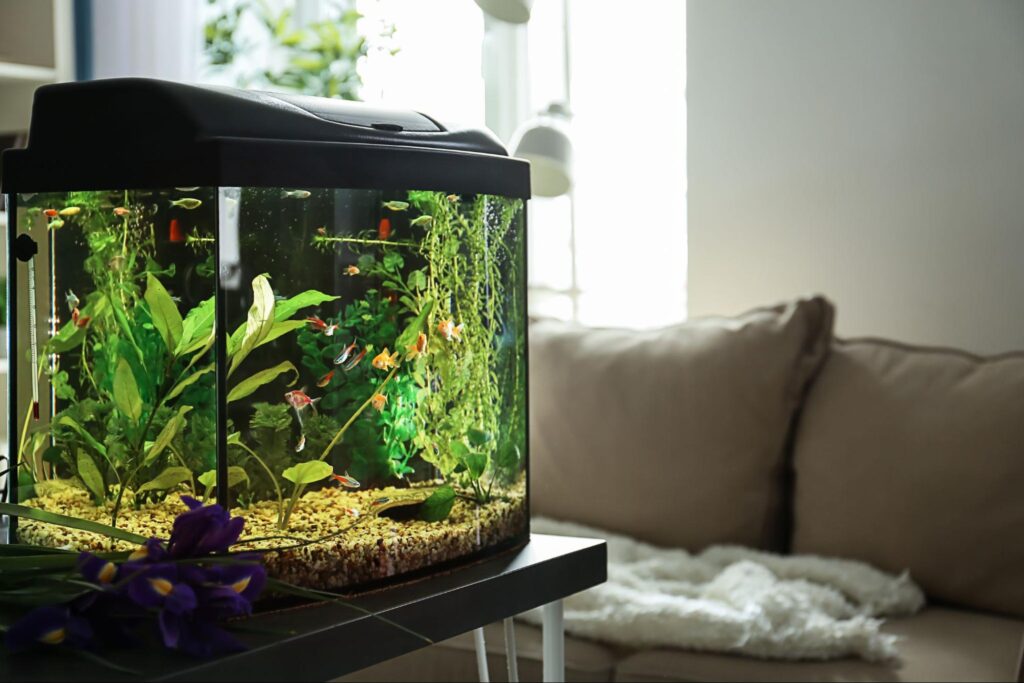
Ditch the fish bowl! Your fish friends deserve the best. Some may ask, “why go beyond the bowl?” And the simple answer is that we know better now!
As the aquarium keeping hobby has exploded in popularity over the years, so did our understanding of what exactly fish need to be healthy and happy. We know now that fish bowls are not suitable environments for fish: they make it harder to regulate temperature, don’t facilitate the air exchange needed for fish to breathe, and can distort your pet’s view of the outside world, increasing stress. The cramped space makes it harder for fish to swim around and can shorten their lifespan greatly.
We know you love your fish, so give them a home where they can thrive. Here’s how to build the best home for your fish.
Pick your Fish!
Deciding which fish to keep might seem like a daunting decision but at Mighty Pet we make it simple. Every fish has different needs and some fish are easier to keep than others, so we’ve written this helpful guide to find the pet that’s right for you.
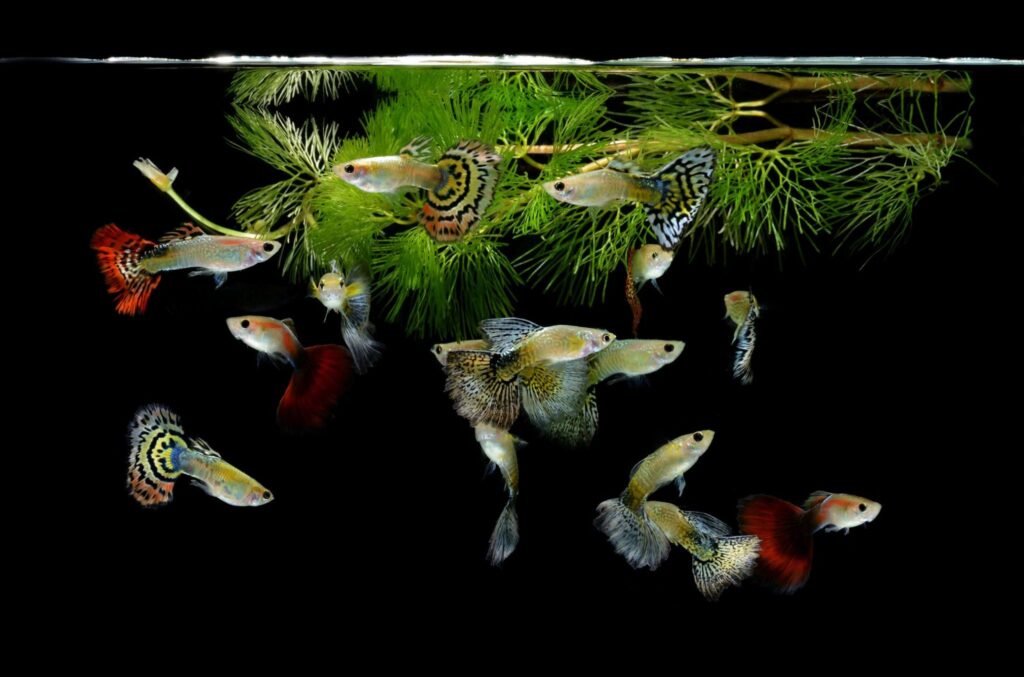
Freshwater or Saltwater?
The first step is deciding between fresh and saltwater. We recommend a freshwater aquarium for beginners, as saltwater tanks generally require more technical maintenance. With a little experience maintaining a saltwater aquarium is as simple as any, but the level of precision needed for maintaining consistent conditions makes the learning curve steep, and expensive. Since this list focuses on first time fish owners let’s look at some good freshwater options.
Best Pet Fish for Beginners
There are a lot of good beginner options for freshwater aquarium fish, and a good way to start is to visit your local Mighty Pet to see what catches your eye. Often having an idea of what fish you’d like to keep will make decisions about tank size and filtration easier. While perusing, here are a few species to look out for:
Goldfish
It might seem controversial to say that Goldfish are the best pet fish, but their popularity is well earned. Goldfish have a reputation for being short lived, but ask yourself, have you ever seen one outside of a fishbowl? When given adequate space, the proper filtration, and some temperature regulation, Goldfish can live for up to 15 years. Longtime goldfish keepers admire them for their puppy-like personality, responding to regular feeding by rushing to greet their owners.
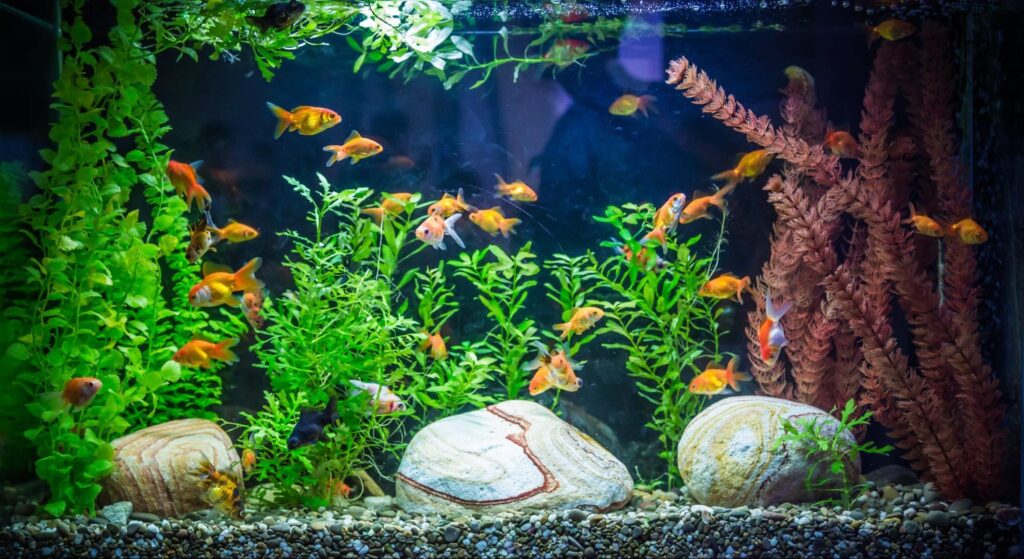
These fish come in a variety of sizes, shapes, and colors and can thrive individually or in groups, giving you a great deal of flexibility in terms of tank mates and aquarium size. When kept well Goldfish are even known to breed in captivity, potentially giving you pets to love for generations.
Tropical Livebearers
Livebearing fish like Guppys, Platys, and Mollys, make fun pets and perfect introductions into the aquarium keeping hobby. Affordable and available in a variety of colors and fin shape, these social fish make a great start for a community tank. If you set up a breeding colony with a quality filter, a consistent heater, and plenty of places to hide you can expect to see tiny fish babies in as little as 28 days.
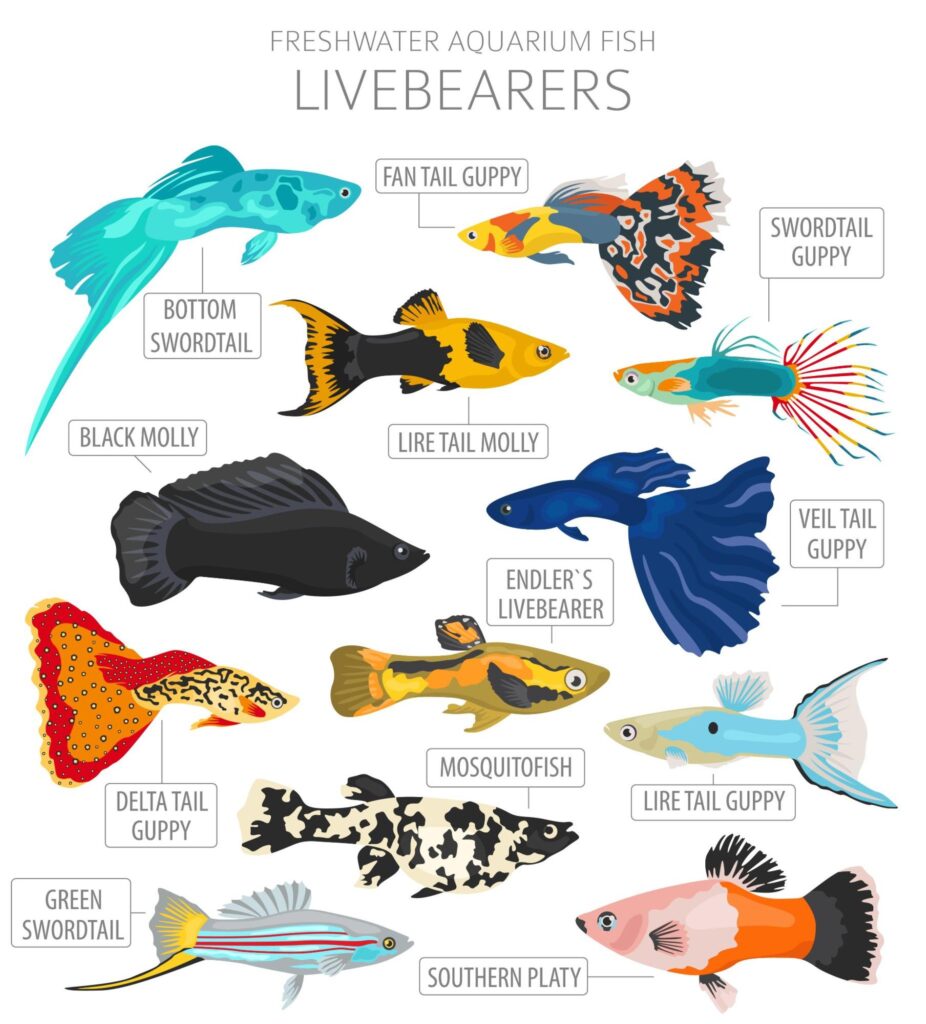
However, given the social nature of these fish, they need to be kept in a group of at least 6 of the same species making them a poor choice for small set ups. However, when looking to stock a tank larger than 10-gallons a group of Guppies, Platys, or Mollys are a perfect choice for beginners.
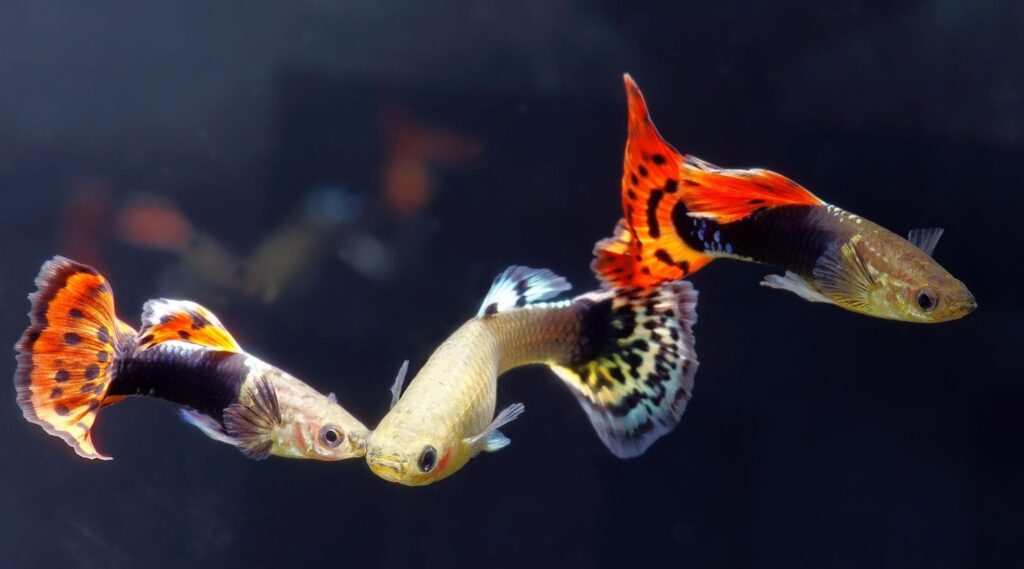
Betta Fish
Beautiful, hardy, long lived, and easy to care for, Betta Fish are an awesome choice for beginner fishkeepers and perhaps, the best pet fish for kids. Capable of ‘breathing’ these fish can tolerate filterless set ups, as they have adapted to grow in the stagnant pools leftover from rainy seasons. But add a filter and a heater, and even with minimal care a Betta Fish can live for 3-5 years.
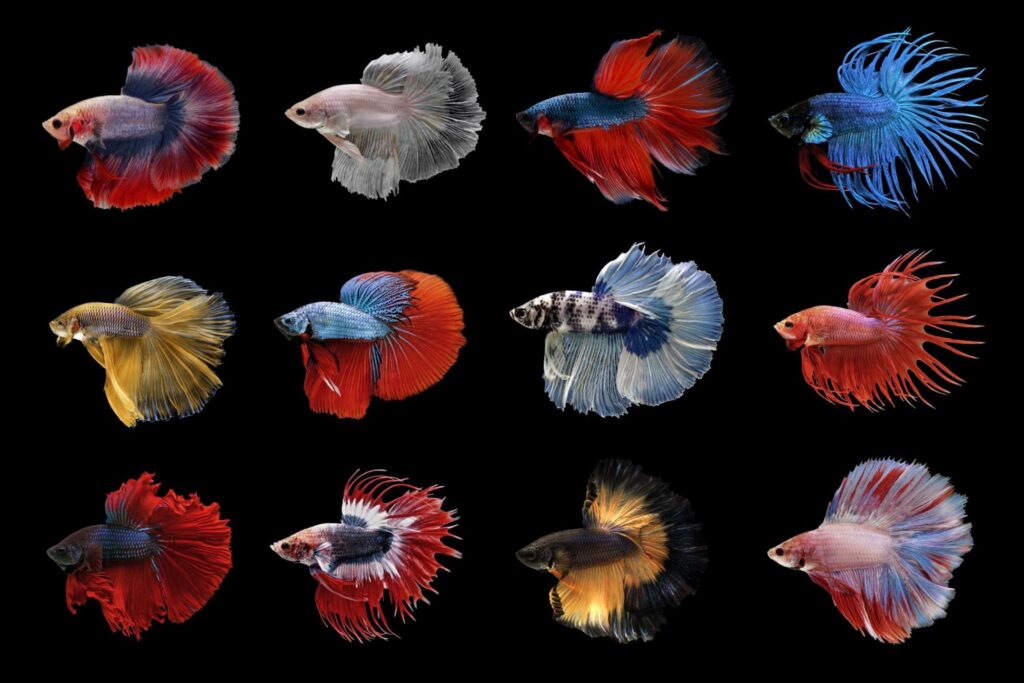
With nearly endless combinations of colors and fin shapes, hunting for the perfect Betta is the perfect way to get your kids excited about fishkeeping.
Note that Betta Fish are extremely aggressive with other fish, especially members of their own species and gender, making them an ideal choice for small set ups, built for a single fish.
Options for the More Experienced Fish Keeper
Corydoras Catfish
Another schooling fish, the Corydoras, or Cory Catfish, are better suited for a fish keeper with a little more experience. Cory Catfish when kept in a group of at least six are fun additions to community tanks given their active personalities and peaceful temperament.
Cory Cats are naturally bottom feeders, which can make it a challenge to feed them when kept with fish who eat quickly from the surface. But with a little attention and care to ensure your Cory’s get the food they need, they make a peaceful, lively addition to a community tank that helps keep your tank bottoms clean.
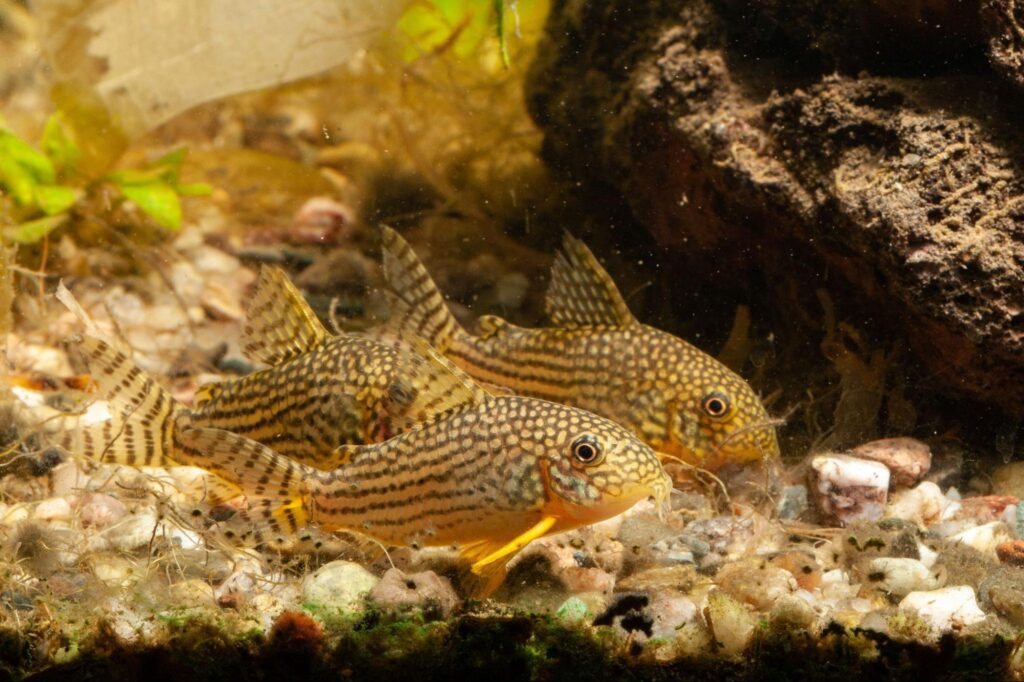
Amano Shrimp
While not technically a fish, these decapods have been the go to solution for maintaining algae in freshwater community tanks, and are a good option for those with more experience maintaining consistent water parameters.
Amano shrimp are available in a variety of colors and breed readily in good conditions, making it easier to set up a breeding colony than most pets. Throw a few color varieties in a tank and have fun watching new combinations of colors emerge. Add some crushed coral to ensure there is calcium present, and your shrimp will be able to molt and grow new shells healthily.
Their small size makes them ideal for micro set ups, smaller than 5 gallons, but Amano Shrimp can also happily housed with other fish in a bigger set up so long as their tank mates aren’t big enough to eat them.
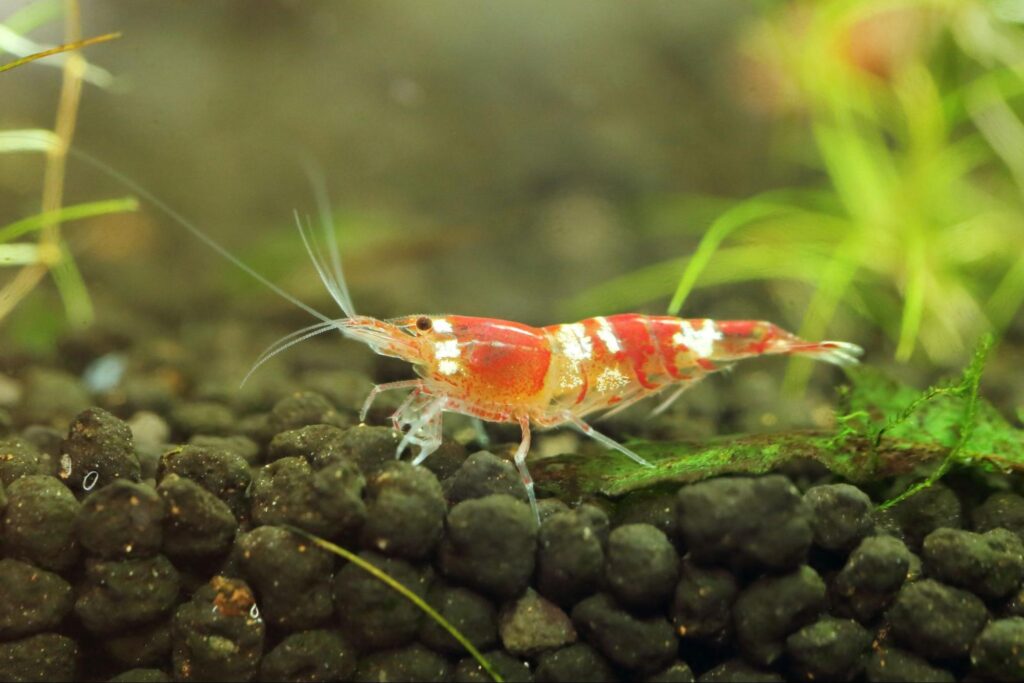
Find the Right Glass Aquarium Size For You
Now that you know which fish you want to keep, the next question is tank size. How many gallons of water does your fish need?
The general rule is that bigger is better. No fish is over stressed by too much space, but every fish is stressed by too little space. Beyond that fishkeepers use another rule of thumb to ensure the ‘bioload’, or waste produced by living animals in the tank, can be processed by the filter.
That is each gallon of water creates ‘space’ for one ‘inch’ of fish. Therefore, one three-inch Betta would need at minimum a three-gallon tank, and six one-inch Mollys would need a tank that holds at least six gallons- likely more.
Remember again, bigger is better, as larger tanks create more stable conditions and are typically easier to maintain healthy parameters.
Most Popular Fish Tank Sizes
5-Gallon Tank
Small fish tanks are ideal for those without a great deal of space, but would still love to keep a fish. Unsuited for social fish because of crowding, a 5 gallon fish tank is a great solution for a Betta fish tank.
10-Gallon Tank
The most popular tank size, and best point of entry for newer fish keepers, Ten Gallon Tanks are affordable and offer ample space for most beginning setups. Often featured in ‘aquarium-kits’, ten gallon tanks make good choices for those looking to keep a small school of tropical fish.
20-Gallon Tank
A direct upgrade to the ten gallon, twenty gallon tanks offer more space, and more stable long term conditions due to their larger volume. These tanks come in two varieties, a long and tall variant, and both have their advantages.
The long tank is a great solution for pets who like to surface regularly as it creates a shallow water line. The tall features the same footprint as a ten gallon tank, making it ideal for those looking to upgrade their ten gallon tank, but lack extra space to do it.
The main benefit to a tank at 20 gallons is the space to keep more fish, making it the most cost effective solution for those looking to keep a variety of community fish. Remember bigger tanks are easier to maintain, so if you have the space go big!
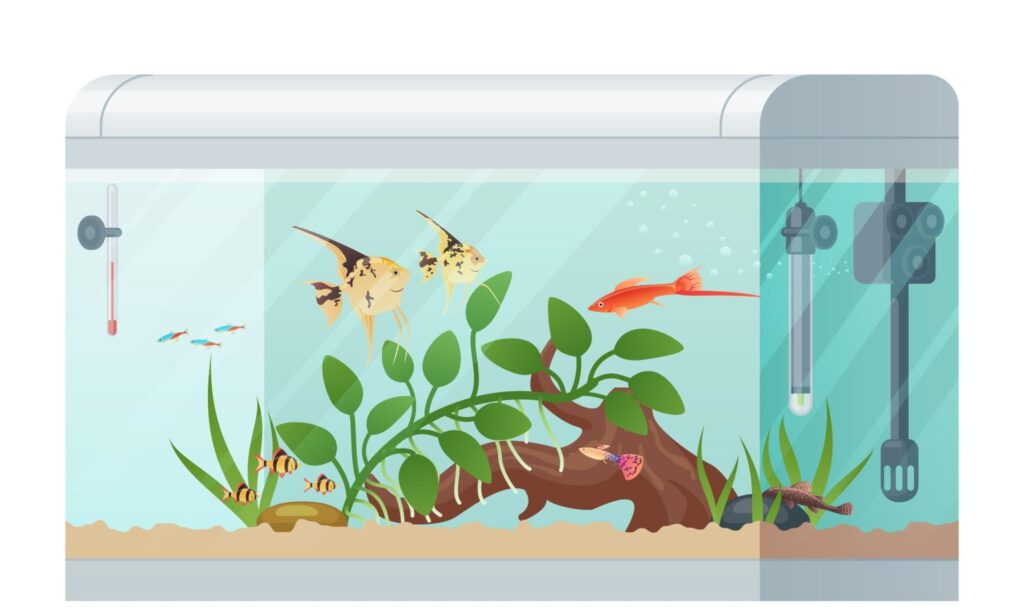
Filtration Made Easy
Filtration is the most intimidating detail of fish keeping for novices. While this is the most important decision you will make when setting up your tank, it’s an easy one when you understand how filtration works. In short, there are three types of filtration at our disposal: mechanical, chemical, and biological.
Mechanical Filtration
Mechanical filtration deals with the removal or straining of solid particles, which may seem like the most important aspect, but this is usually only considered a secondary and added benefit to other systems. While removing particulates keeps crystal clear water, this type of filtration doesn’t remove toxins from the water column.
Chemical Filtration
Chemical filtration, similarly sounds important, but only involves the removal of microscopic waste particles before they can be decomposed. Think of it like mechanical filtration on the molecular level. Again, this type of filtration is largely added as a secondary benefit to aid in the larger process of biological filtration- the only way to definitively neutralize toxins from your tank.
Biological Filtration
Biological filtration follows the natural process by which waste is processed, and works by facilitating this process faster than toxins can accumulate. This process is often referred to as the nitrogen cycle. Of the three types of aquarium filtration, biological filtration is the most important to the health of your tank as it is the only way to remove the toxic ammonia that builds in your water as waste decomposes.
Biological filtration works by colonizing helpful bacteria in a medium, usually a sponge or a similar material with high surface area, and passing water through the colonized medium to allow the helpful bacteria to scrub the water of ammonia, keeping the water safe for fish. Plants can also aid this process naturally by absorbing some potentially toxic chemicals.
Temperature Control
With your filter set it’s time to select a heater. Wattage is important and should correspond to the size of your tank, with higher wattage, larger heaters being suitable for larger tanks. Again, having too high wattage is better than too low, as a heater without adequate wattage will likely burn itself out trying to maintain a consistent temperature.
Some heaters feature a temperature select, but for beginners a preset heater is a safe bet for most tropical fish. Preset Heaters are designed to maintain one temperature, usually around 78 degrees, without the need to dial in the ideal conditions.
Making Your Tank a Home with Fish Tank Decorations
With the technical details decided, it’s time for some fun. Let’s pick out some fish tank decorations.
Decorations do more than add interest to your aquarium, as all fish benefit from having places to hide. Living in a glass box with nowhere to go can cause stress in your fish. A substrate is a great place to start.
A substrate layer will help add depth to your aquascape, as well as providing more surface area for beneficial bacteria to colonize. Aquarium safe sand or gravel make great options and come in a variety of styles and colors. With a substrate decided, next comes your hardscape. Select some rocks, cured branches, and fish tank decorations that suit your style.
From sunken pirate ships to dragon skulls the sky’s the limit for decorations, but make sure to use only products designed for aquariums. Add an LED Light to see your new friends, consider a fish tank stand to display your new set up proudly, and enjoy your new pets.
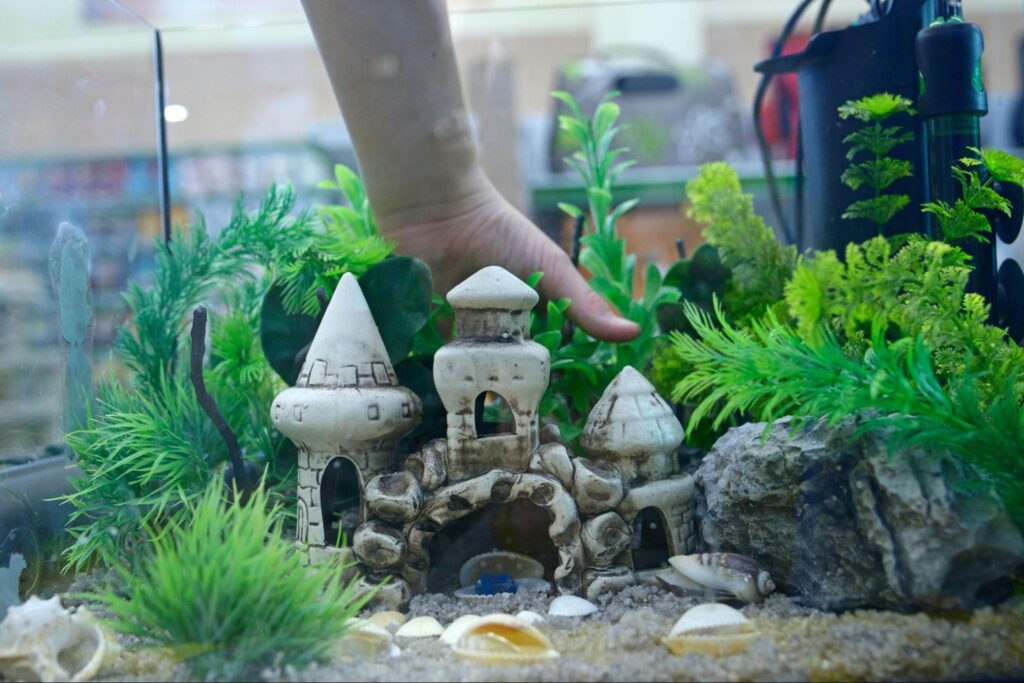
Consider Plants
For those with more experience, strongly consider adding live plants in your set up. Java ferns and amazon swords grow well when planted in aqua soil and thrive in a typical tropical tank. Java moss is a string-like plant that makes a healthy snack for fish too impatient to wait for feeding and creates lots of space to hide for small fish and newly hatched babies. Live plants create hiding spaces, add interest, can add variety to fish diets, and even aid in biological filtration by absorbing toxins.
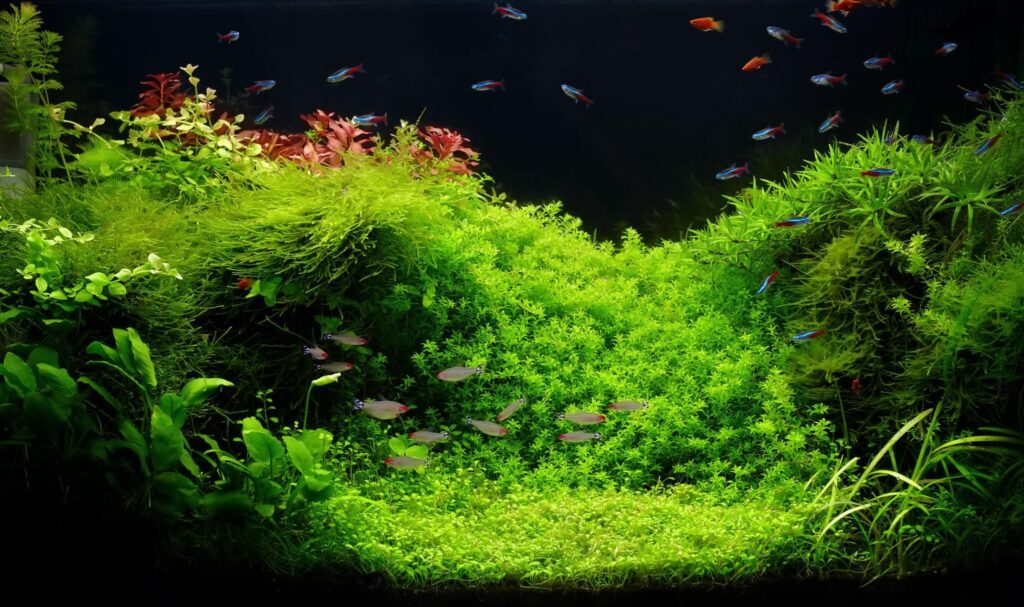
Condition, Acclimate, and Enjoy!
With your decoration lay out decided, it’s time to fill up the tank. Unfortunately, most tap water is treated with chemicals that can be harmful to your aquatic pets. To keep your fish healthy use a water conditioner- also sold at Mighty Pets- to neutralize chlorine and other harmful chemicals.
It is recommended that you let your tank run with conditioned water for at least a week before introducing fish to your set up, as this will allow bacteria to colonize your filter and jump start the chemical filtration process.
Before introducing your fish into the tank, let the bag rest in the tank to equalize temperature and prevent shock to your new fish. Or drip acclimate your fish by putting them in a separate container, large enough to hold the water they came in, and fed by a slow drip from your main tank. Either approach will help your fish transition into their new home comfortably.
Your New Fish Tank Journey Begins at Mighty Pet
Fishkeeping is as easy as setting up your tank. At Mighty Pet we offer several Aqueon starter kits to make your decision easy. Starter sets include all you need, filter, heater, and light. Grab some fish food, pick your fish, and enjoy your new pet.
Come into the shop and we will find the fish that’s right for you, or shop us online at MightyPet.net!




